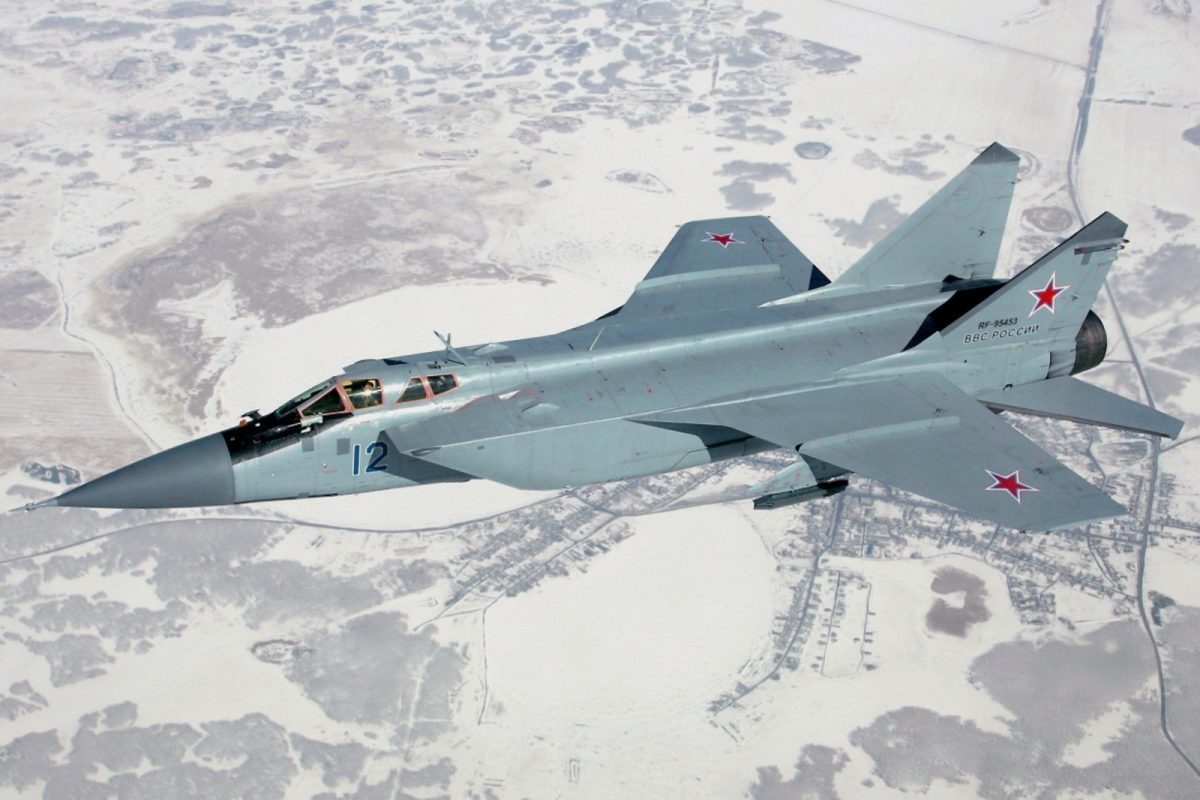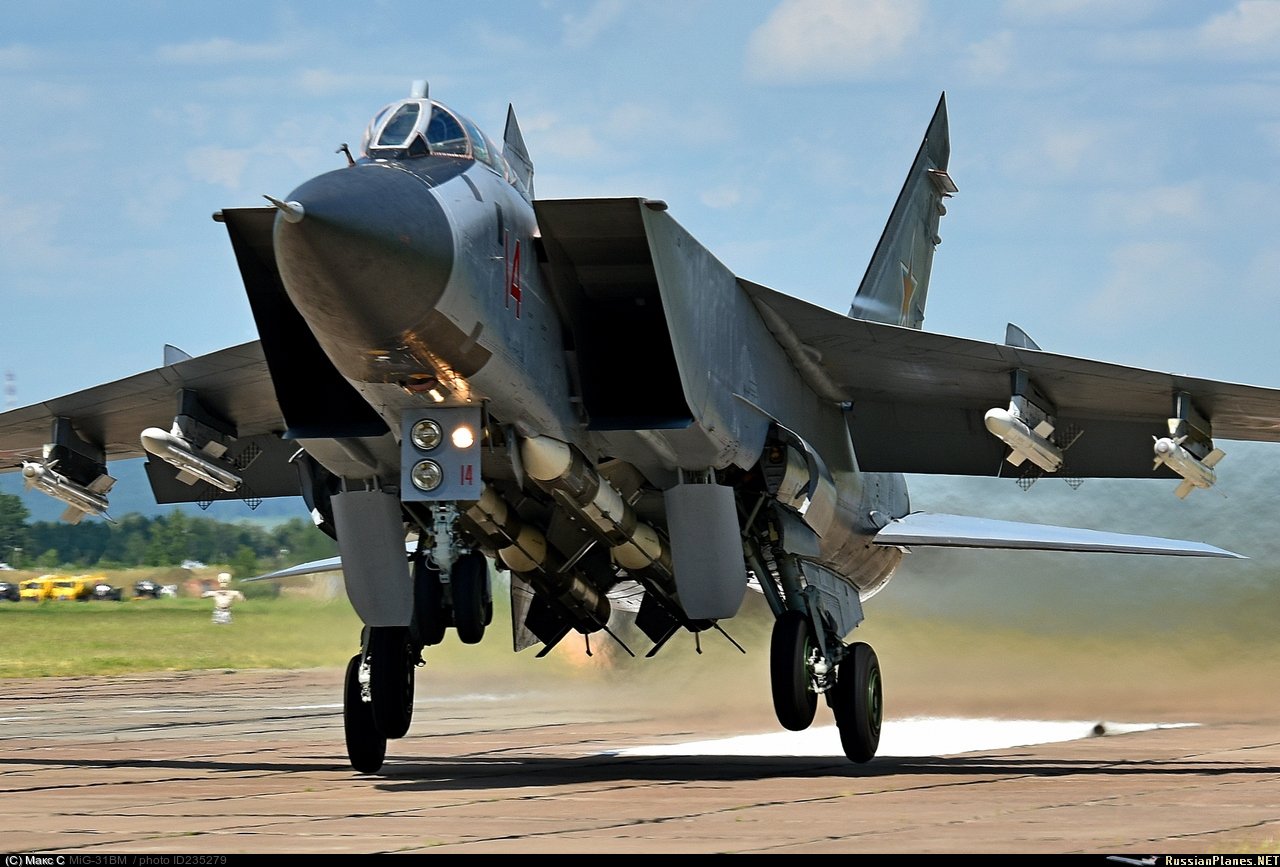Russia’s cutting-edge war machine, the MiG-31, capable of firing deadly hypersonic missiles, demonstrated its firing capabilities in the upper reaches of the atmosphere.
Officials in the Russian Navy’s Baltic Fleet recently announced that Russian MiG-31 fighter jets practiced missile attacks during maneuvers in the stratosphere on September 13, Russian media Pravda reported. The Baltic fleet is headquartered at Kaliningrad.
“The pilots of MiG-31 aircraft practiced flight maneuvers in the stratosphere, trained their skills to escape attacks from mock enemy aircraft and relocate to operational airfields of the region,” said the statement from the Baltic Fleet.
In February, EurAsian Times reported that Russia had reportedly stationed a MiG-31K ‘Foxhound’ fighter jet armed with a Kinzhal hypersonic land-attack missile in Kaliningrad along the Baltic Coast. The deployment was made days before the Russian troops launched their so-called special military operations.
Later, the Russian Ministry of Defense announced on August 18 the deployment of three MiG-31 fighters armed with Kinzhal hypersonic missiles to Chkalovsk airfield in the Kaliningrad Region as part of additional strategic deterrence measures.
According to reports, the three aircraft were moved to the Kaliningrad area for the exercises, where they simulated strikes on mock-up enemy command centers as part of training flights. The flights of the MiG-31 aircraft took place under the cover of Su-27 fighters.

It is pertinent to note that the Baltic region in Eastern Europe has seen hyper-vigilance from Moscow and the West in the aftermath of the invasion. When the Russian invasion began, the US sent its fighter jets to the Baltic for NATO’s air policing missions.
MiG-31s are not frequently stationed at Russia’s Kaliningrad location. Some of the 50 aircraft stationed at the facility are older Su-27 and Su-24 fighters, with some newer Su-30SM and Su-35S jets on the way. According to reports, Iskander missiles are also housed in the enclave.
Besides the MiG-31 fighter jet, Russian reports indicated that the crews of the Eleron and Orlan-10 unmanned aerial vehicles of the Baltic Fleet practiced the tactics to overcome the air defense zone of a mock enemy at the Kaliningrad enclave.
While the MiG-31 drills are significant as they come during a surprising counter-offensive by Ukraine, it is not the first time this mighty warplane conducted exercises in the stratosphere. The MiG-31 had practiced in the stratosphere as early as 2017.
Further, in August 2019, the crews of upgraded MiG-31BM fighter jets held their first-ever dogfight in the stratosphere at an altitude of over 20 kilometers, as previously reported by TASS.
Russia’s MiG-31 Fighter Jet On Duty
The two-seat MiG-31, known as the Foxhound under its NATO designation, is Russia’s primary fighter-interceptor aircraft. It has two D-30F6 engines, which help the aircraft have a base range of 1900 miles and a top speed of Mach 3 at high altitudes.
The MiG-31 is equipped with the SBI-16 Zaslon fixed phased array antenna radar, one of the most advanced in the world, to support its long-range and high-altitude air defense duty. The MiG-31 can engage air targets with various long and short-range missile combinations in addition to its Gsh-6-23 23mm gun.
The Russian Defense Ministry announced its plans to fund a MiG-31 Foxhound interceptor modernization and life extension program in July 2020. The MiG-31 can fly at high speeds and low altitudes, thanks to its sleek and aerodynamic body. The aircraft is built to track several targets at high altitudes simultaneously.

Despite Russia’s claims that it is developing the MiG-41 to replace the MiG-31, there is little evidence that the plane will be operational soon. Therefore, Russia has decided to develop several updated MiG-31 variants that will enable the Foxhound to continue service for many years. The MiG-31BM is the most notable of these.
The MiG-31BM is one of the MiG-31’s most potent variants. It is a multipurpose, fast, long-range fighter with the power to destroy air and ground targets.
The MiG-31BM includes upgraded avionics, hands-on-throttle-and-stick (HOTAS) controls, liquid-crystal color multifunction displays (MFDs), a robust onboard computer system, digital data linkages, and phased array radar. It has the capability of intercepting 24 targets at once.

The MiG-31BM was initially intended to carry Kinzhal hypersonic missile, but MiG-31K was later selected as the carrier, according to Russian Defense Minister Sergei Shoigu. MiG-31Ks were used to strike targets early in Russia’s 2022 invasion of Ukraine with Kinzhals. Only 10 to 20 MiG-31Ks have been upgraded to fire Kinzhals.
These Russian interceptor fighters have also intercepted NATO spy planes and fighter jets and will potentially continue to be deployed for a long time. In January, China-based Sohu publication had referred to the Russian MiG-31 interceptor fighter as a “mysterious killer.”
- Contact the author at sakshi.tiwari9555@gmail.com
- Follow EurAsian Times on Google News




